A slim old man with long white hair and bright eyes sitting under a tree behind his house making a chapi - a traditional musical instrument of the Raglai ethnic minority, is a familiar image to the people of Do village. That old man is artist Chamaléa Au, one of very few Raglai in the region who still makes chapis and has retained the ability to fine tune the sound of this instrument.
The traditional musical instrument of the Raglai became well known after the song “Chapi Dream” written by composer Tran Tien. The lyrics, which have a line that goes as “Everyone who is poor owns a chapi”, describes the instrument as having indispensable spiritual value for the Raglai.
According to Chamaléa Au, he was taught to play chapi when he was a child, which was the case for all Raglai children. Other children grew up and lost interest for the instrument whereas Chamaléa Au chose to continue making and tuning the chapi using skills learned from his father. His chapis are always of the best quality. At cultural events and festivals of the village his chapi is always present.
While busy tuning the strings of a chapi, Chamaléa Au enthusiastically told his guests about how to make the instrument as well as many stories associated with it. He proudly presented his chapis and said, “These are the best made chapis, so if they go on sale, the price will not be cheap”.
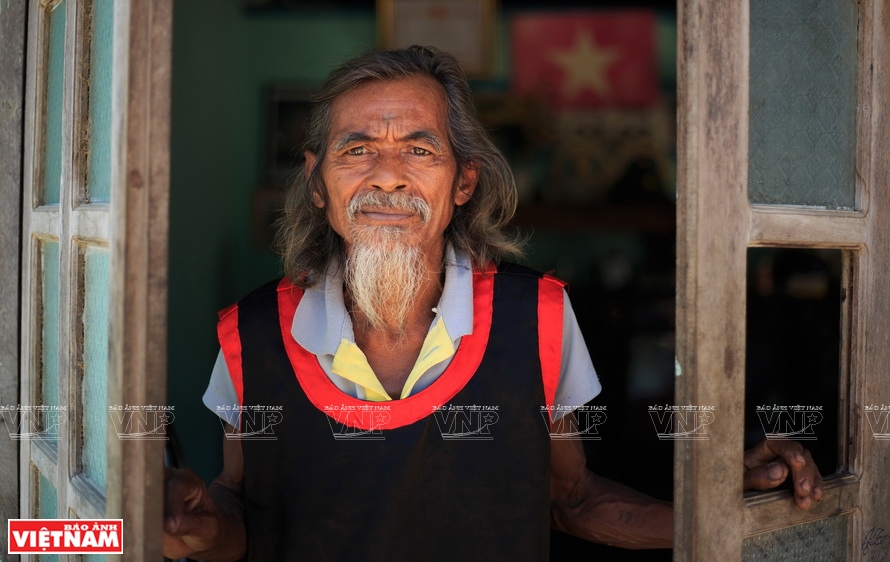
Artist Chamaléa Au has retained the ability to fine tune the sound of the chapis.
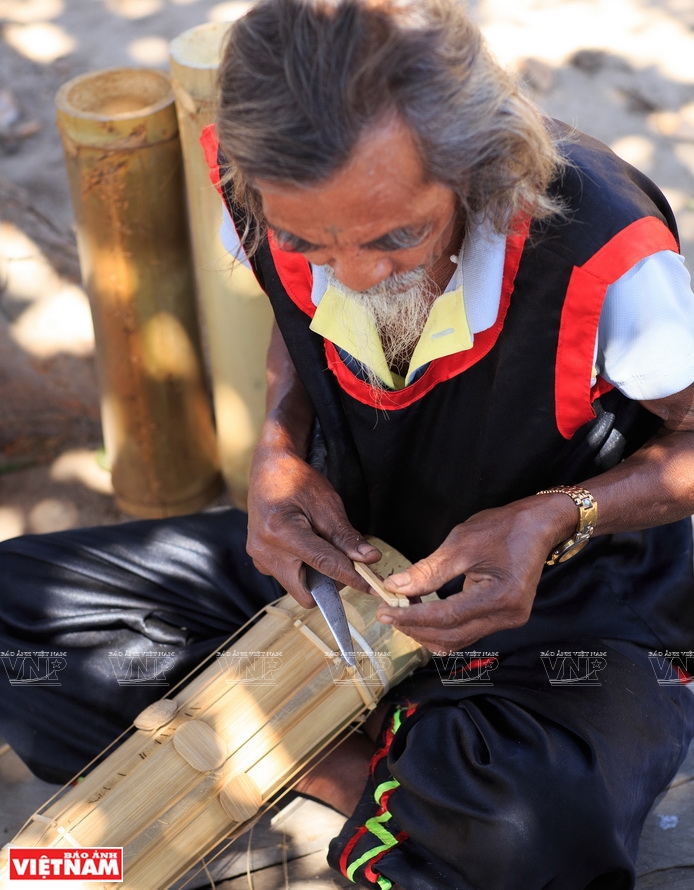
Chamaléa Au carefully makes every detail of the chapi.
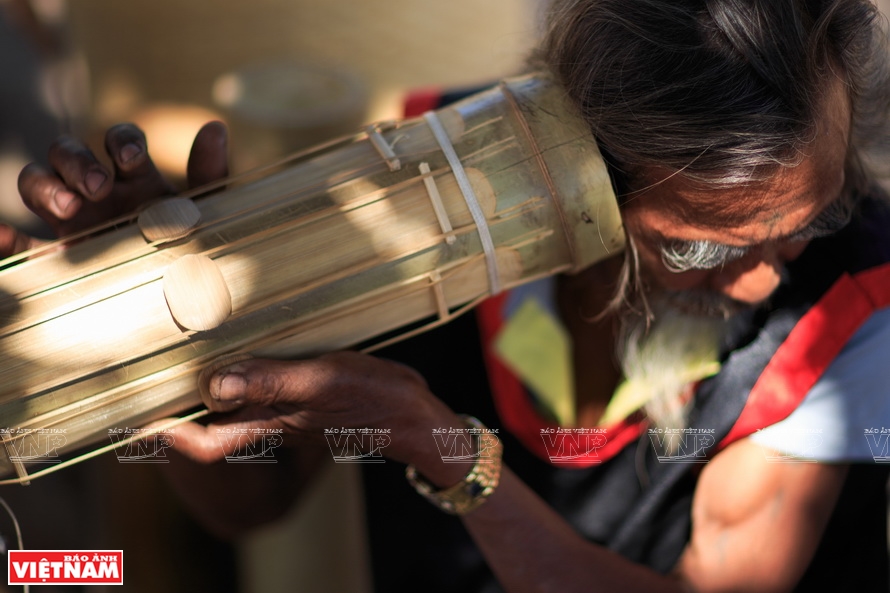
Chamaléa Au senses the sound of the chapi which he is making.
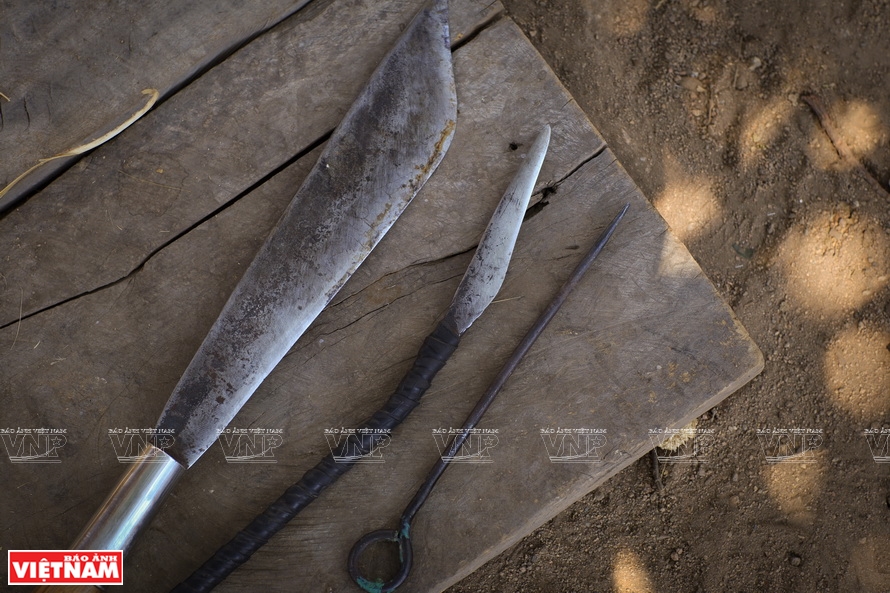
Tools used to make the chapis.
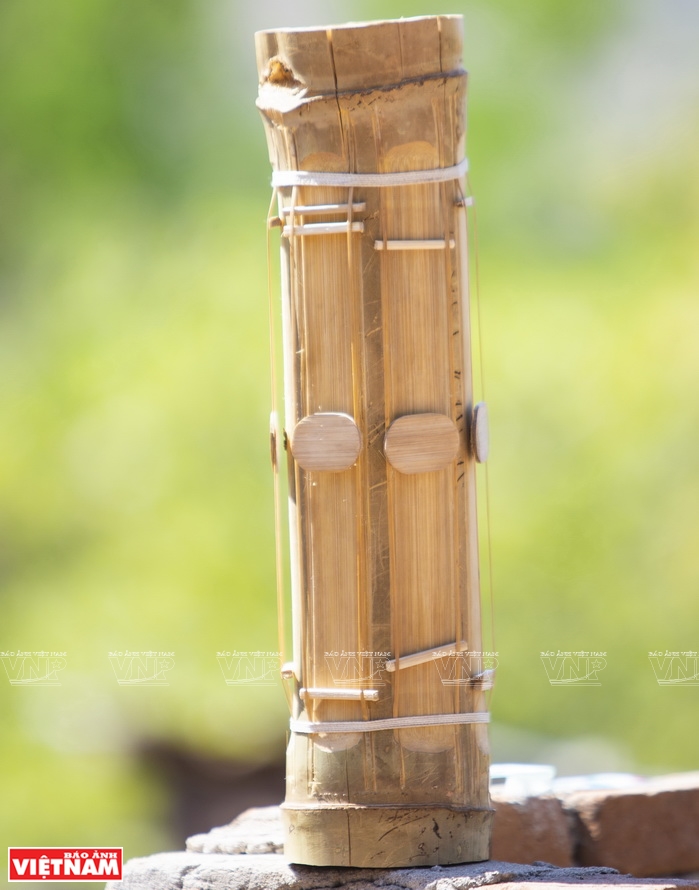
A chapi made by artist Chameléa Au. |
According to Chamaléa Au, the technique of making a chapi is not difficult, but it requires passion and dedication. High quality chapis must be made from straight, beautiful, old pieces of bamboo, about 7-8 cm in diameter and 40cm in length. The bamboo must be dried before being worked with. Making strings, shaping and tuning a chapi took a long time to learn in order to create the soulful sound of the instrument.
In an effort to introduce and promote chapi to the public, Chamaléa Au has often brought chapi to perform in Hanoi. These events include the celebration of the first National Congress of Vietnamese Ethnic Minorities in 2010 and in 2011 at the Vietnam Museum of Ethnology as part of activities preserving and promoting folk cultural heritages. These performances have all been well received.
Locally, he participated in many ethnic cultural activities and performed at annual festivals. In 2015, he was given the title of Emeritus Artist by the president for his outstanding contributions in cultural heritage preservation and promotion
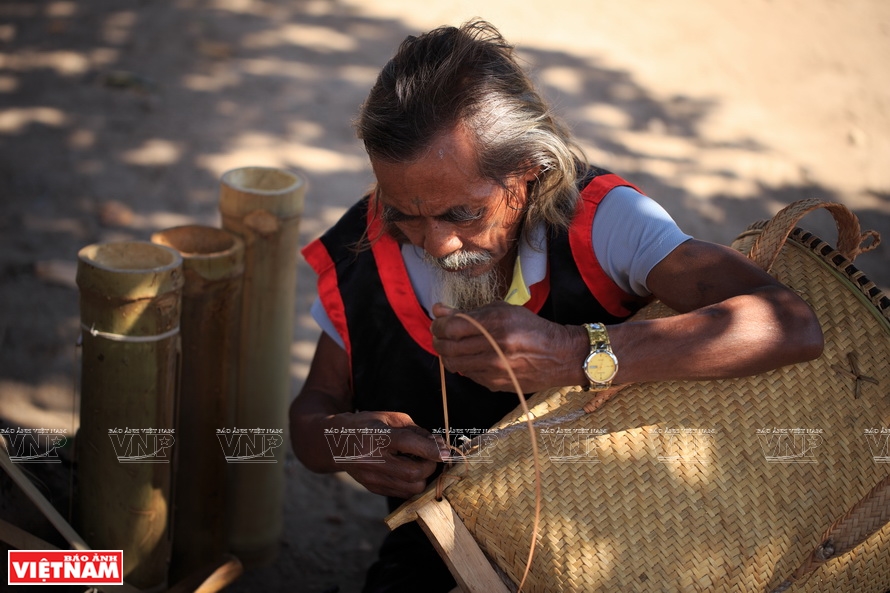
Chamaléa Au also makes other musical instruments and working tools.
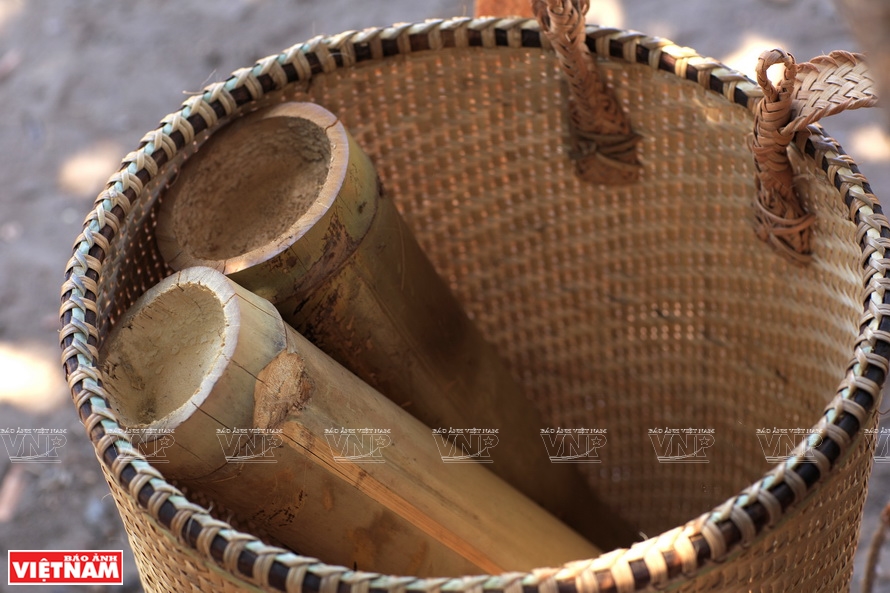
High quality chapis must be made from straight, beautiful, old pieces of bamboo.
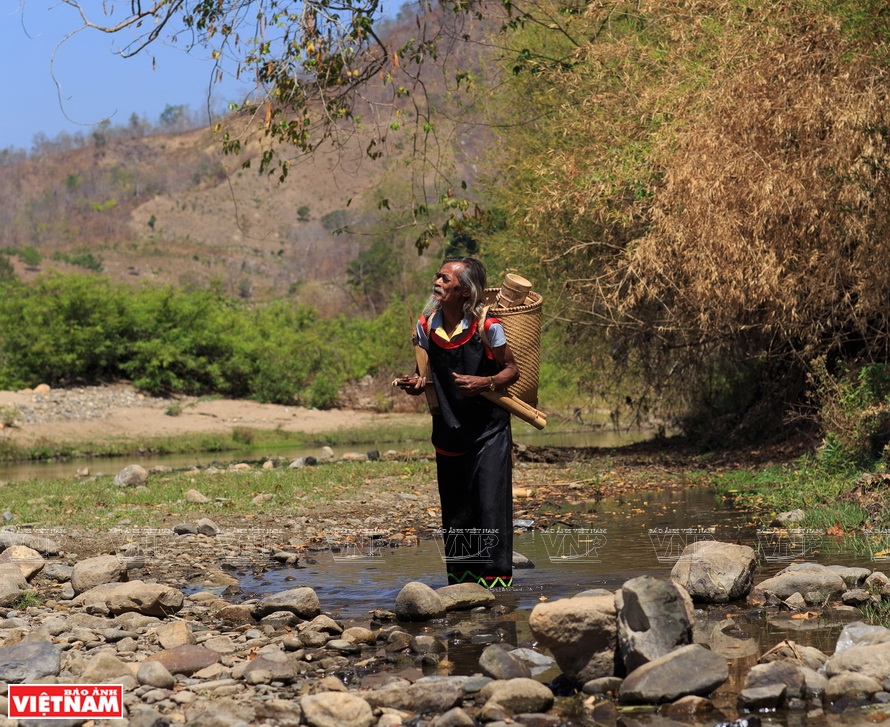 Chamaléa Au goes to the forest to find old pieces of bamboo to make the chapis. Chamaléa Au goes to the forest to find old pieces of bamboo to make the chapis.
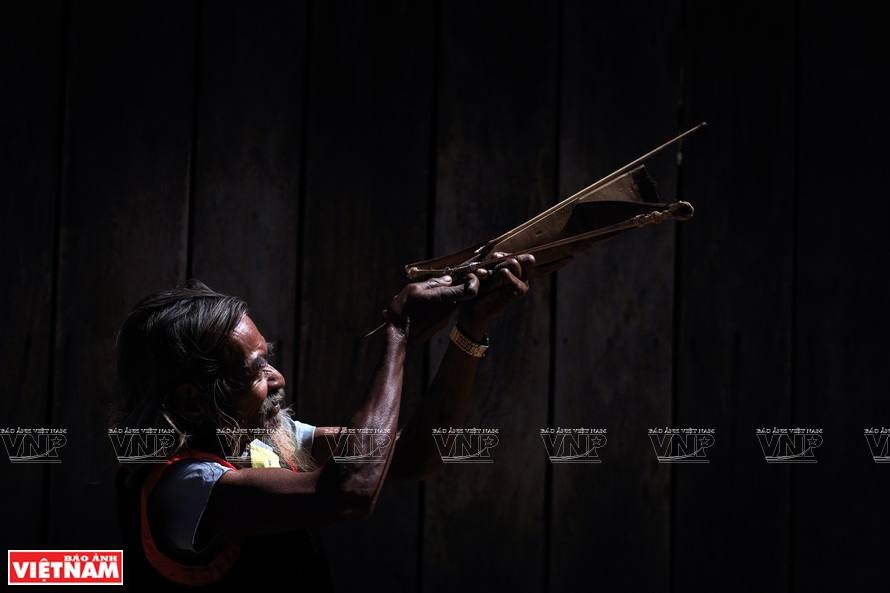
Artist Chamaléa Au and his bow and arrow. |
Artist Chamaléa Au is considered to be one of the very few remaining members of Raglai community in Ninh Son who can make, play and tune the chapi. He can also make other musical instruments.
Story: Son Nghia - Photos: Le Minh & Nguyen Luan